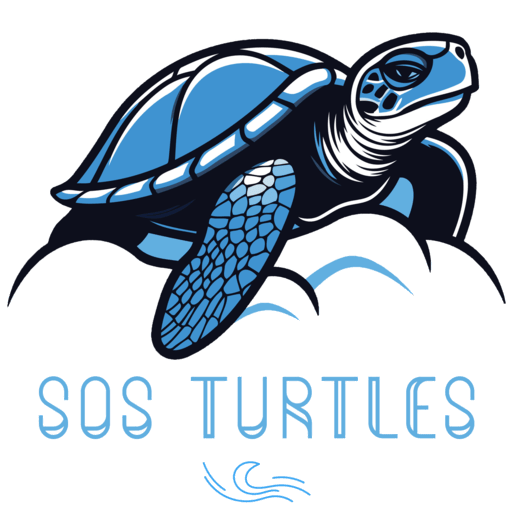Did you know that only about 1 in 1,000 sea turtle hatchlings make it to adulthood? At SOS Turtles, we’re dedicated to understanding and protecting these remarkable creatures throughout their incredible lifecycle. From the moment they hatch to their eventual return to nest, each stage presents unique challenges and opportunities for survival.
Table of Contents
The Nesting Stage
The lifecycle of a sea turtle begins when adult females return to their natal beaches to lay eggs. This nesting process typically occurs at night, as it provides the hatchlings with a better chance of evading predators. Once the female has found a suitable spot in the sand, she digs a nest using her flippers and lays an average of 100-200 eggs, depending on the species.
After laying the eggs, the female covers the nest with sand and returns to the ocean, leaving her eggs to incubate in the warm sand. This incubation period lasts about 60 days but can vary based on environmental factors like temperature and humidity. The temperature of the sand plays a critical role in determining the sex of the hatchlings, with warmer temperatures producing more females.
Unfortunately, this stage is fraught with danger. Many nests fall prey to predators such as raccoons, birds, and even other sea turtles. To help mitigate these threats, organizations like SOS Turtles work to protect nesting sites through community engagement, beach patrols, and education about the importance of conserving these areas.
The Hatching Process
As the incubation period draws to a close, the hatchlings begin to emerge from their eggs. This process is known as “hatching,” and it occurs during the night. The hatchlings use their egg tooth, a small, temporary structure on their snouts, to break free from their shells. Once they have hatched, the tiny turtles instinctively make their way toward the ocean, guided by the moonlight reflecting off the water.
During this critical journey, hatchlings face numerous threats. Birds, crabs, and other predators lie in wait, eager for an easy meal. Additionally, artificial lights from beachfront developments can confuse the hatchlings, leading them away from the ocean and towards danger. To combat these issues, SOS Turtles advocates for responsible beach lighting and conducts public awareness campaigns to educate local communities on the challenges hatchlings face.
The Oceanic Stage
Once the hatchlings reach the ocean, they enter the oceanic stage of their lifecycle. During this time, they rely on their natural instincts to survive in the vast and often perilous marine environment. The first few years of a sea turtle’s life are spent in the open ocean, where they feed on small jellyfish, plankton, and other marine organisms.
This stage can last anywhere from several years to more than a decade, depending on the species. The turtles grow and mature, but they still face numerous challenges, including predation from larger fish and sharks. Ocean pollution, particularly plastic waste, poses a significant threat during this phase, as turtles may mistake plastic for food, leading to severe health complications or even death.
To protect these vulnerable creatures during the oceanic stage, SOS Turtles collaborates with marine conservation organizations to raise awareness about plastic pollution and promote cleaner oceans. Efforts include organizing beach cleanups, advocating for reduced plastic use, and encouraging local businesses to adopt sustainable practices.
The Juvenile Stage
As sea turtles grow and mature, they eventually reach the juvenile stage of their lifecycle. Juvenile turtles typically find refuge in coastal habitats like seagrass beds and coral reefs, where they continue to feed and grow. During this time, they become increasingly independent, honing their foraging skills and learning to navigate their environment.
In the juvenile stage, sea turtles face new challenges, including competition for food and habitat. They must also contend with human-related threats such as fishing gear, habitat destruction, and climate change. To combat these issues, SOS Turtles actively participates in community outreach initiatives, educating fishermen about turtle-safe practices and promoting sustainable fishing methods that minimize bycatch.
The Return to Nesting Grounds
After years of growth, the time comes for mature female sea turtles to return to the beaches where they were born to lay their eggs. This remarkable journey can span thousands of miles, and the ability to navigate back to their natal beaches is a phenomenon that has fascinated scientists for decades.
Once they arrive, the females go through the nesting process again, contributing to the next generation of sea turtles. It is estimated that only a small percentage of hatchlings survive to reach adulthood, highlighting the importance of protecting every stage of the lifecycle.
SOS Turtles is committed to ensuring that these turtles can safely return to their nesting grounds and successfully reproduce. Our ongoing conservation efforts aim to protect nesting sites, reduce plastic pollution, and engage local communities in sustainable practices.
The Importance of Conservation
Understanding the lifecycle of sea turtles is crucial to their conservation. By addressing the threats they face at each stage, organizations like SOS Turtles can implement targeted strategies to protect these magnificent creatures. From protecting nesting sites to educating communities, every effort counts in safeguarding the future of sea turtles.
Moreover, the health of sea turtle populations is indicative of the overall health of marine ecosystems. By protecting sea turtles, we are also preserving vital habitats that support a diverse range of marine life. This interconnectedness highlights the importance of conservation efforts not only for sea turtles but for the health of our oceans as a whole.
Conclusion
At SOS Turtles, we are passionate about protecting sea turtles and ensuring their survival through every stage of their lifecycle. By raising awareness, engaging local communities, and implementing effective conservation strategies, we strive to make a lasting impact on these incredible creatures and their habitats. Join us in our mission to safeguard the future of sea turtles in Panama and beyond.
Want to Find Out More About SOS Turtles?
Explore our homepage to learn about our mission, initiatives, and how you can get involved in sea turtle conservation!










